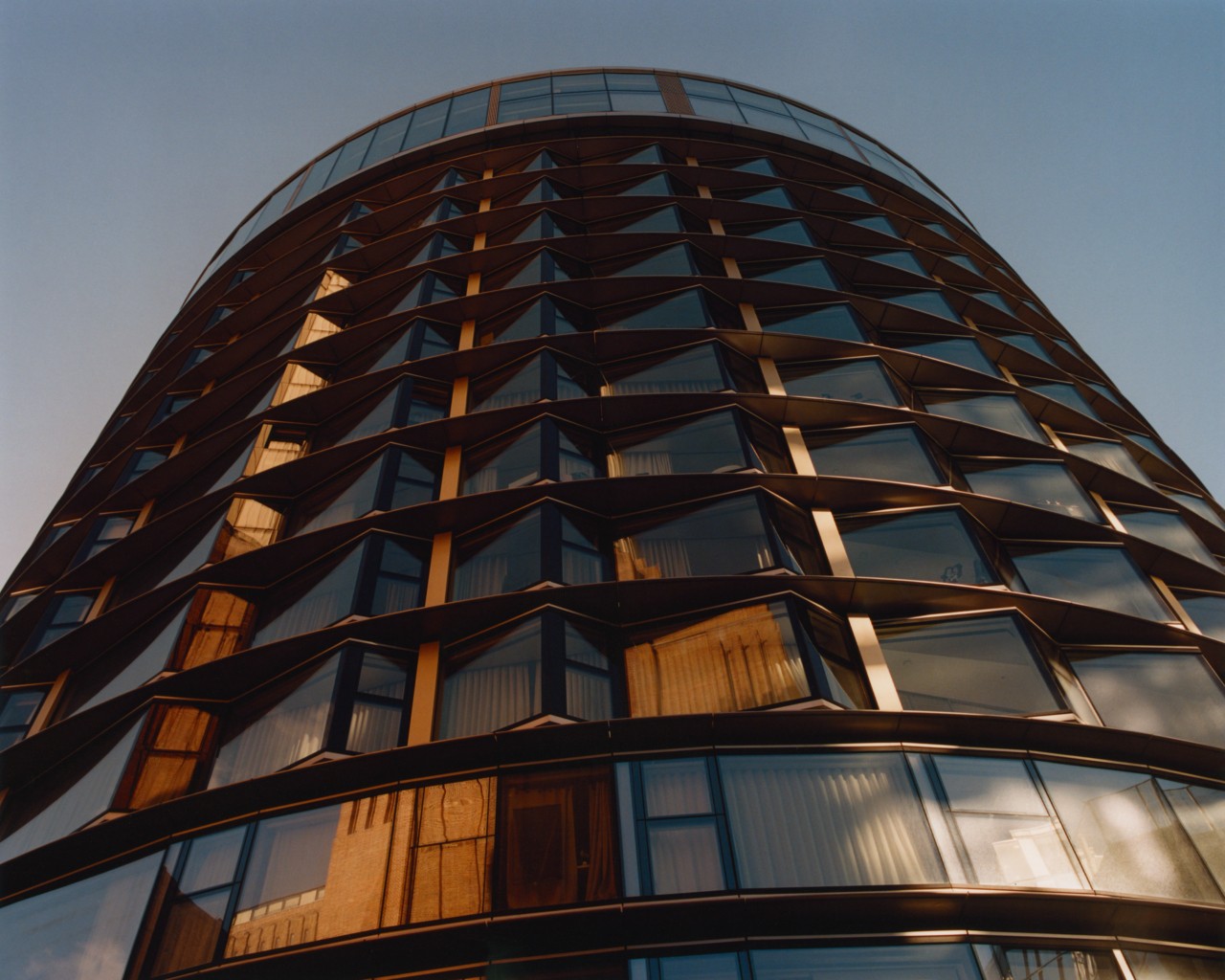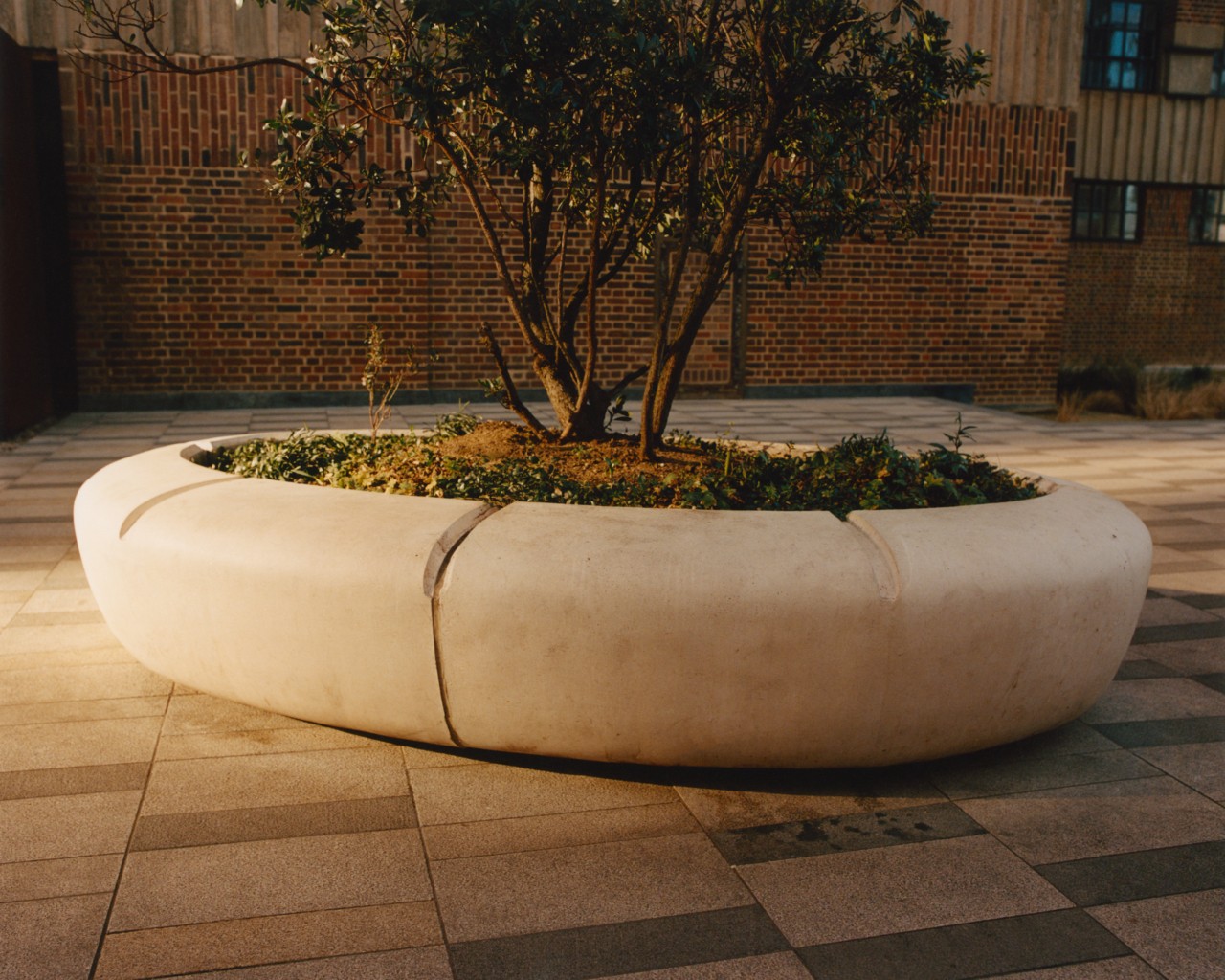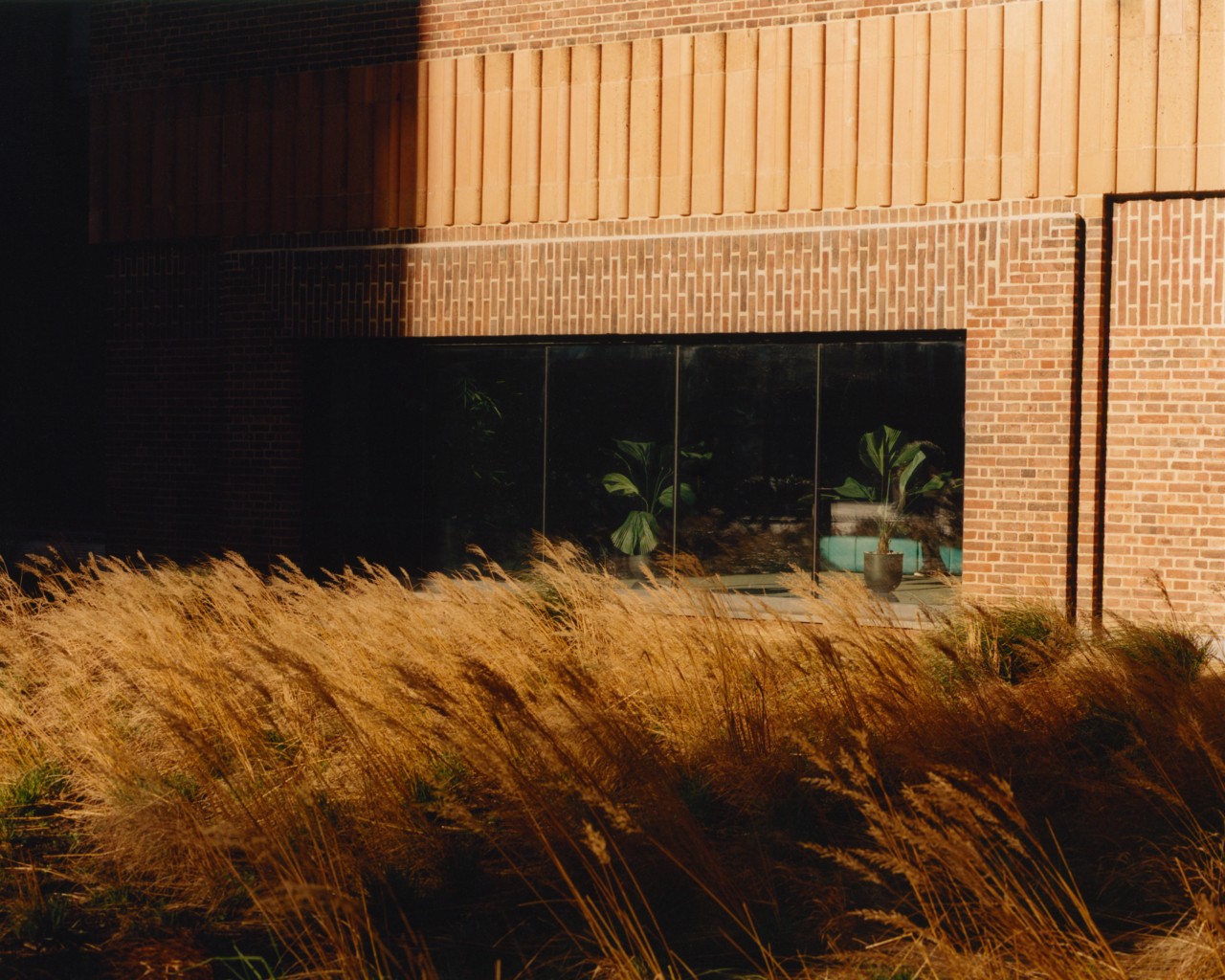

Words by Bridget Reed Morawski
photographs by Joshua Sneade
Every year, hundreds of thousands of people descend on Alexandria, Virginia, a small riverside city, to learn about its history, take in its culture, and enjoy its vibrant dining scene. There’s also a popular bicycle trail that traces the water’s edge, allowing visitors to pedal from the city northbound to the nation’s capital while passing marinas and parks.
It’s unlikely any of the tourists stop for long to admire the old Potomac River Generating Station, a decaying former coal-fired power plant hulking over its namesake waterway about a 20 minute walk from Alexandria’s main street. Although the trail squeezes between the river and the plant’s faded former pump house, most of its rusting metal buildings and broken glass windows aren’t closely visible from the property’s barbed-wire fence line.
In a few years, much of this site will likely be unrecognizable. The creaking metal ventilators will be gone, as will the towering structures that once held coal and burned it to electrify the area. Although a final design has yet to be approved, a multi-use complex with hundreds of thousands of square feet of residential and commercial space is slated to rise in its place.
By overhauling the power plant premises—including opening an adjacent former coal field into a public park—Alexandria officials and a real estate redevelopment firm see a golden opportunity to turn the inaccessible eyesore into a communal riverside gem.
Adaptively reusing an underutilized parcel of prime waterfront in a major U.S. city seems like a no-brainer given that fewer urban lots remain for potential development. Indeed, it’s a decision more municipalities like Alexandria, which has received some regional acclaim for the planning behind this project, are making, especially as more fossil fuel plants are decommissioned and fall by the wayside. The same development company behind the Alexandria project—Hilco Redevelopment Partners—is also redeveloping power plants in Boston and Philadelphia.
Elsewhere in Philadelphia, another developer (Lubert-Adler Real Estate Funds, which didn’t respond to an interview request) has recently converted a former generating station in the popular Fishtown neighborhood into the $154 million, 173-unit Battery redevelopment. Down in Savannah, Georgia, a glitzy JW Marriott hotel has taken over the building that once housed several iterations of fossil fuel-fired methods of power production. And in London, U.K., WilkinsonEyre took a former coal plant—the Battersea Power Station—and converted it into 254 apartments in addition to thousands of square meters of office and retail space (the developer never responded to a set of emailed questions).

“You have a waterfront property and all of a sudden you’re unlocking prime real estate that has been locked up for years. It’s transformational.”
For city planners with disused power plants ready for rehabilitation, these properties represent “a once-in-a-generation, if not [once-in-a-] century, opportunity to really rethink their future and really chart a different future,” says Andre Brumfield, the global leader of the cities and urban design practice at Gensler, an international architecture firm partnering with Avison Young and Charah Solutions in redeveloping a power plant property in Avon Lake, Ohio.
That’s in part because of the dwindling amount of space in cities with development potential, but also due to the inherently high real estate value of being next to a universally popular amenity with limited inventory: waterways. No matter if it’s the Potomac River in Alexandria or the Thames in London, the builders of so many coal-fired power plants relied on rivers, oceans, and lakes to take advantage of the water for various tasks, ranging from washing the coal to cooling the steam that turns the plant’s turbines.
“You have a waterfront property and all of a sudden you’re unlocking prime real estate that has been locked up for years,” Brumfield notes. “It’s transformational.” But despite the appeal of breathing new life into facilities, the process is easier said than done.
After decades of environmental contamination and degradation, those facilities need more than a bucket of soapy water and a scrub brush before their fresh start can begin. Julianna Connolly, the executive vice president of environmental remediation for Hilco Redevelopment Partners, says the decades of storing and burning coal, as well as the addition or creation of related chemicals in the process, lead to an array of concerning substances that must be cleaned up before moving on with new construction.
Heavy metals—a class of toxic substances that includes lead, cadmium, mercury, and arsenic—are among “the most common constituents that we encounter” at coal-fired power plants, she says. Almost all are linked to organ damage, even if exposure is low, and various types of cancer.
Other common contaminants at such sites include polycyclic aromatic hydrocarbons, or PAHs, a class of naturally occurring chemicals emitted when coal burns that are associated with “increased incidences of skin, lung, bladder, liver, and stomach cancers,” among other non-cancerous ailments, according to the U.S. Agency for Toxic Substances and Disease Registry.
Known to harm thyroid and reproductive health, Connolly says polychlorinated biphenyls, or PCBs, haven’t been used in the United States for decades. Her team also has to look out for these man-made chemicals because “they were historically used in oils used in electrical transmission,” meaning they were useful for taking that coal power and sending it to the grid.



Oil is also often contaminating former coal-fired power plant sites, since it’s often used in equipment, heating, or as an alternative fuel source for power generation, according to Connolly.
“There’s a list of chemicals,” she points out, noting that the complexity of clean-up activities is site-specific. How many times oil or another contaminant has been released into the environment at the site and the severity of those releases are critical considerations. Another complicating factor? What type—or types—of soil are present at the site. “You might have the same size or quantity released at two different power plants and they could end up being very different in the ground, because one had one soil type which allows the contamination to move and the other had a different soil type that kept it sort of localized,” Connolly says.
Even if previous owners attempted to remediate known issues, it’s possible some contaminants can’t be handled until existing structures are removed. At Hilco’s Alexandria project, the previous property owners had started remediating the ground where an oil spill had occurred. But she says the release occurred “very close up to the power plant building,” which meant there was only so much that could be cleared up without risking structural problems. “As that building is deconstructed in the future, we’ll have an opportunity to go in and physically remove, through excavation, the residual contamination,” Connolly explains.
While no one interviewed for this article could estimate how much more expensive it is to redevelop a power plant into a housing multi-use complex (nor were sources with the U.S. Green Building Council or the U.S. Environmental Protection Agency made available for interviews on the topic), the resulting housing units don’t appear to be affordable for the communities that once dealt with the belching smoke stacks and environmental pollution of those sites.
At The Battery in Philadelphia, for example, the lowest-price apartment currently available appears to be a 507 square-foot unit going for $2,001 per month, according to their sales website. Yet, for context, U.S. Census Bureau data shows the median gross rent for homes within that zip code has been $1,250 per month in recent years (specifically, between 2018 and 2022).
Given the environmentally devastating repercussions of these power plants, it may be tempting to forget about their existence and forge ahead anew. But developers point out that these sites were often culturally and economically vital to the surrounding community, literally forming the backdrop of their lives.


It helps that many have contemporarily desirable architectural features, like massive windows, exposed brick facades, and soaring ceilings that can be maintained and leveraged for a luxurious aesthetic. The features play with scale and in a way that is difficult to replicate with the modern day talent and budgets, adding a sense of grandeur no matter if it’s a small power plant turned single-family home in Oregon or an array of historic turbine halls, like those Hilco is restoring for community use as part of a power plant redevelopment project in South Boston. In Philadelphia, some units at The Battery even come with private patios carved into the former smoke stacks.
In Avon Lake, Brumfield says historic preservation was top-of-mind for him during the initial redesign phase. “With projects like this, [architects] always try to see if we can actually preserve what we feel are the most aesthetically pleasing parts of a plant like this that speaks to the identity and spirit” of the area, says Brumfield.
However, he continues, “what overrules that is [the] cost but also the structural viability of the structures that are to remain.”
With the Avon Lake project, Brumfield was excited to preserve a historic turbine hall with “a lot of good character and strong rhetoric as clearly the most identifiable piece of the whole plant.” A set of towering smoke stacks that he says “almost serve as a skyline when you’re coming in from Chicago.”
Developers point out that these sites were often culturally and economically vital to the surrounding community, literally forming the backdrop of their lives.
But the structural integrity of the stacks meant all but one had to be knocked down—and because of their proximity to Lake Erie, “the only place where it could fall was on the turbine hall.”
“That was kind of devastating for us, it took us almost a year, year and a half, to come to that conclusion,” he says.
Similarly, few parts of the existing power plant in Alexandria will remain. Too little of it is structurally or environmentally sound to keep, although Hilco’s spokesperson, Amelia Chassé Alcivar, says the former pump house will be gutted of its equipment, have its remaining hazardous materials removed and be reimagined for dining and recreation. A guardhouse by the entrance will likely remain but be turned into a welcome center to highlight the history of the site, or perhaps used as a leasing facility as the apartments begin to first fill up, she says.
“Potentially, we’ve talked about an ice cream shop or a bike repair shop—those are two things that are going to be in demand in this part of town now,” notes Chassé Alcivar.



Correction,
February 20, 2024 8:32 am
ET
The story has been updated to clarify the role of the international architecture firm, Gensler. It partnered with Avison Young and Charah Solutions in redeveloping a power plant property; it did not redevelop the property itself, as it is a team of designers, not developers.
Flipping the Switch From Fossil Fuels to Housing








